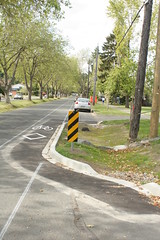
Courtesy of Sightline Daily, which is from the similarly-named Sightline Institute out of Seattle, everything you need to know about stormwater:
An overflow of 15 million gallons of sewage and stormwater fouls the shoreline of picturesque Port Angeles, putting the waterfront off limits to the residents and visitors of the Olympic Peninsula town due to health concerns.
Portlanders are socked with some of the nation’s highest water utility rates in order to pay for the city’s $1.4 billion “Big Pipe” projects.
Northwest scientists document coho salmon dying in urban streams with their bellies full of eggs, perishing before they can spawn.
The culprit in each of these stories is the most mundane of villains: the rain. As rainwater streams off roofs and over roadways and landscaped yards, it mixes a massive toxic cocktail. It scoops up oil, grease, antifreeze, and heavy metals from cars; pesticides that poison aquatic insects and fish; fertilizers that stoke algal blooms; and bacteria from pet and farm-animal waste. A heavy rainfall delivers this potent shot of pollutants straight into streams, lakes, and bays—threatening everything from tiny herring to the region’s beloved orcas to our families’ health.
Given we are still stalled on the Uplands sewage separation, let alone any sort of treatment of our stormwater, I think fixing this problem is a long time coming. That being said, the CRD has been pretty successful with their source control projects and have some good information about bioswales, both designed to prevent all those pollutants mentioned above from getting into the storm drains in the first place.